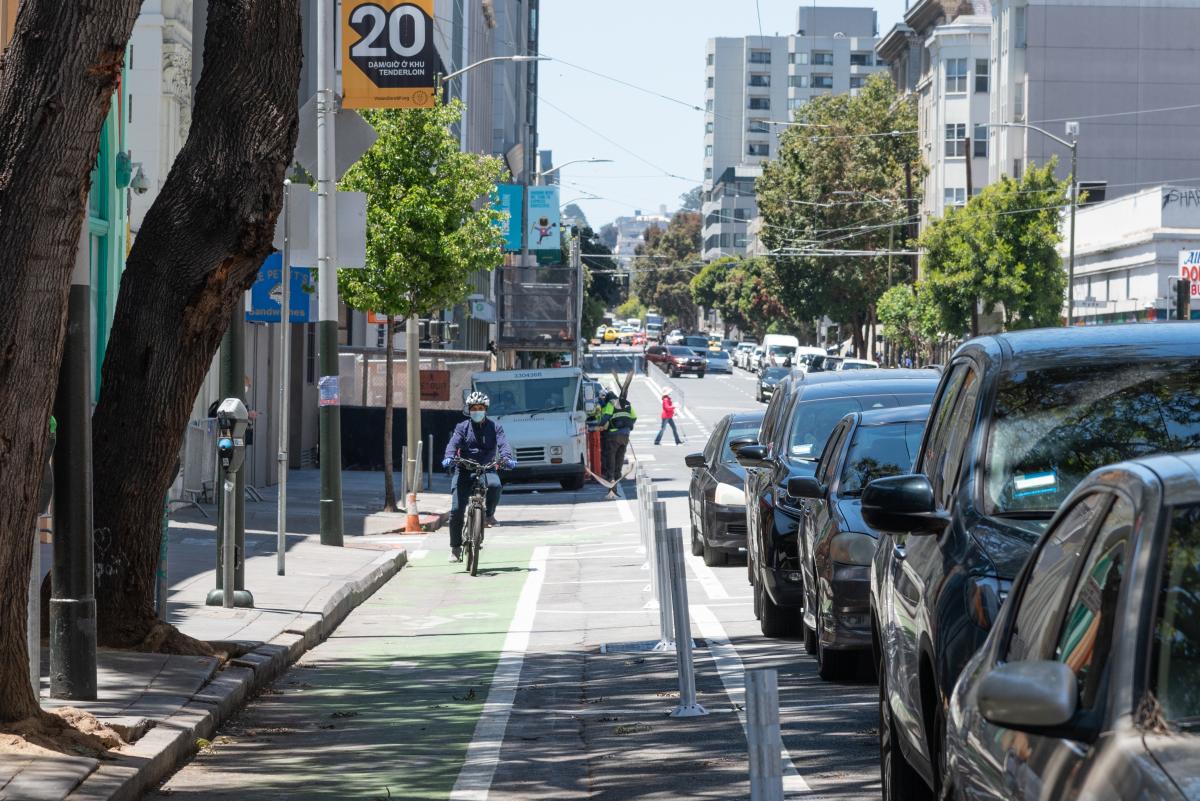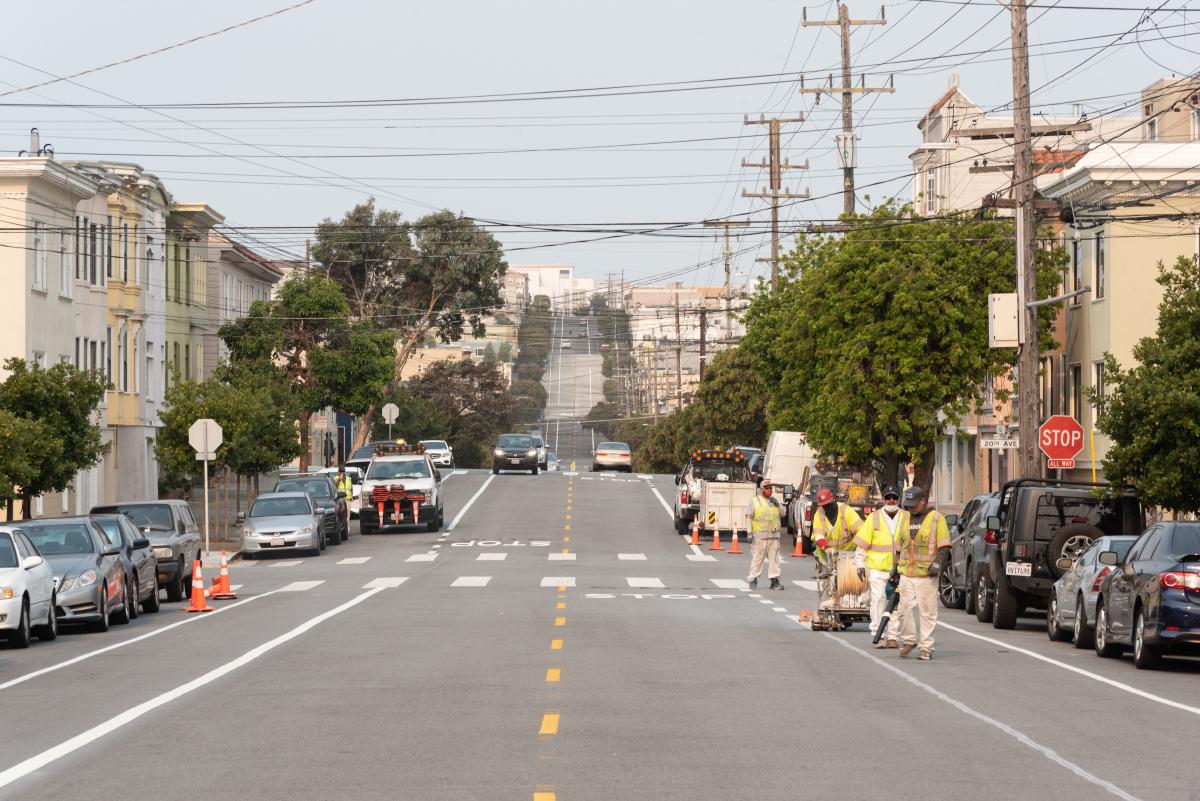Growing India News, world news, nation news, our news, people's news, grow news, entertainment, fashion, movies, tech, automobile and many more..
Tuesday, December 21, 2021
Show HN: PandaDoc API Enhancements https://ift.tt/3FinSaH
Safe Driver Awards 2021
By Pamela Johnson
Navigating any type of vehicle, no matter the size, through miles of hilly San Francisco terrain and sharing the roadway with others is no easy feat. Add Ubers, private and commercial vehicles, taxis, bicycles, scooters and pedestrians into the mix and the challenge escalates quickly.
But what is even more truly remarkable is that we have 282 Muni transit operators who've managed this safe driving record with no avoidable safety incidents year after year for more than 15 years. Some for several decades!
This year, the Muni operators named as honorees for the annual Safe Driver Award Program have met that challenge to be called a Safe Driver. Additionally, 20 new operators were welcomed to this elite club of which three have at least 35 years of safe driving:
-
Oliverio Valle, Cable Car Division, 47 Years Safe Driving
-
Lonnie Moore Jr, Green Division, 44 Years Safe Driving
-
Jason Lao, Green Division, 37 Years Safe Driving
Typically, we hold a banquet dinner to formally honor these operators who have proven to be the best of the best and the safest of the safe, but as you know, like the previous year, 2020 was anything but typical. While we cannot celebrate in person again this year, the accomplishment does not go unnoticed. A special recognition will take place during the Tuesday, January 18th Board of Director’s meeting at 1 pm. Director of Transportation, Jeff Tumlin and Transit Workers Union Local 250A will be presenting the awards. The meeting will be streamed live through SFGovTV.
What are the criteria for being a Safe Driver?
Simply put, operators who have driven a minimum of 1,952 qualifying hours* each fiscal year with no avoidable safety incidents on record. Safe drivers are also recognized with belt buckles, patches and certificates at various points.
Qualifying hours are defined as the sum of actual hours spent operating a transit vehicle (platform hours, including both regular and overtime) plus hours of vacation taken and holiday hours granted (including floating days) within the qualifying period. Due to COVID-19, qualifying hours for FY2021 also include COVID Sick and Furlough. The qualifying period of the fiscal year is July 1, 2020, to June 30, 2021.
It goes without saying that receiving a Safe Drivers Award is a career milestone achievement for transit drivers everywhere. Muni operators who exemplify the term "safe driver" have clearly demonstrated excellence in service and have furthered the SFMTA's ongoing commitment being a transit first city.
This year the 282 transit operators being honored with the Safe Driver distinction have at least 15 years of Safe Driving experience and will receive a commemorative 2021 token, belt buckles, patches to wear on their uniform shirt or jacket, and a certificate.
We thank all our drivers for their exemplary work moving San Francisco regardless of the number of years involved. The following list honors those with 15 years or more of safe driving who have earned the coveted distinction of being called a Safe Driver.

Published December 21, 2021 at 04:41AM
https://ift.tt/3J30mka
Show HN: I've made a Figma plugin that converts design to HTML with TailwindCSS https://ift.tt/3yLLl1n
Show HN: Lisp with GC in 436 Bytes https://ift.tt/3mlBZEE
Show HN: Python decorator that enables arbitrarily-deep tail/non-tail recursion https://ift.tt/3pdjvIf
Monday, December 20, 2021
Livable Streets Look Back 2021
By Eillie Anzilotti
How We Made San Francisco Streets Safer In 2021
As 2021 comes to an end, we're reflecting on everything SFMTA has done to make San Francisco streets safer for all.
But first, let’s wind back 50 years ago to 1971: the year the first bike lanes went in in San Francisco! The city’s first bike lanes on Lake Street came out of a community effort to calm traffic and make the neighborhood safer.
There’s an often-quoted expression that “change happens slowly, then all at once.” For San Francisco safe streets, 2021 is certainly in the “all at once” phase. Fifty years after the first bike lanes were installed in the city, we’re continuing to push the boundaries of what safe streets can look like in San Francisco. Here’s a look at some key progress from this past year:
Transforming the Tenderloin: In a neighborhood where every street is on the city’s Vision Zero High-Injury Network, we implemented a suite of projects to make the whole area safer. Some highlights:
- Two Vision Zero Quick-Build projects: On Golden Gate Avenue, a new protected bike lane was added along with improved curb access for businesses, and Leavenworth was reduced from three travel lanes to two to promote safer speeds.
- Pedestrian scrambles—which stop traffic in all directions to make it safer for everyone to cross—were implemented at 10 intersections
- In a San Francisco first, 20 mph speed limits and No Turn on Red restrictions were implemented neighborhood-wide to improve safety.
- Several COVID-19 response projects have evolved into permanent community features. A physical distancing lane on Jones Street, implemented to give people more space to walk during the pandemic, was turned into a permanent travel lane reduction on the street to calm traffic. A weekly block closure on Turk Street to provide place for gathering and recreating is now Turk Street Safe Passage Park, a full-time street closure that welcomes nearly 100 visitors a day and provides a new public space for the community. These street transformations in the Tenderloin were implemented with collaboration and support from local partners, like Code Tenderloin and the Tenderloin Community Benefit District Safe Passage Program.

Adding Quick-Builds in the Bayview: After the Bayview Community-Based Transportation Plan was approved by the SMFTA Board in 2020, the first projects were installed this year. Two quick-build projects to improve safety conditions in the Bayview–one on Williams Avenue and one on Evans/Hunters Point/Innes–were completed, along with spot improvements like continental crosswalks. The Quick-Build on Hunters Point Boulevard features concrete barriers painted with murals by local artists.
Expanding San Francisco’s bike network: Over 12 miles of new bike facilities, including 7 miles of new protected bike lanes, were added across the city. Some highlights include a new two-way bikeway on Alemany Boulevard, and a protected bike lane as part of the Folsom Street Quick-Build in SOMA. Nearly five miles of Anza Street have been updated with bikeway markings, speed cushions, and a travel-lane reduction to encourage safer speeds and create an important east-west bike route through the Richmond. You can read more about (and see!) how much San Francisco’s bike network has grown in the last several years in this blog post.

Evolving Slow Streets: Slow Streets have evolved from an emergency response to COVID-19 to one of the SFMTA’s most efficient ways to transform city streets to promote walking, biking, and rolling. In August, the first four post-pandemic Slow Streets–Sanchez, Shotwell, Lake, and Golden Gate–were approved to be extended beyond the pandemic. Sanchez and Shotwell are fully implemented with unique designs informed by extensive community outreach.
Setting records for traffic calming: The traffic-calming program installed over 233 traffic calming devices across the city–the most ever completed in a year. Traffic calming devices like speed humps, speed cushions, and raised crosswalks make any street safer, and the team worked quickly and efficiently to respond to resident requests for safer conditions on their streets.
Thank you to everyone in the community who has advocated for, championed, and made use of these projects across the city. We look forward to continuing to make San Francisco streets safer in 2022!
Published December 20, 2021 at 09:24PM
https://ift.tt/3GZ9NiN
Show HN: Podcast Search Engine https://ift.tt/3sBJ0oX
Show HN: ReadMyMRI DICOM native preprocessor with multi model consensus/ML pipes https://ift.tt/H4txQBC
Show HN: ReadMyMRI DICOM native preprocessor with multi model consensus/ML pipes I'm building ReadMyMRI to solve a problem I kept runnin...
-
Show HN: An AI logo generator that can also generate SVG logos Hey everyone, I've spent the past 2 weeks building an AI logo generator, ...
-
Breaking #FoxNews Alert : Number of dead rises after devastating tornadoes, Kentucky governor announces — R Karthickeyan (@RKarthickeyan1)...
-
Show HN: Snap Scope – Visualize Lens Focal Length Distribution from EXIF Data https://ift.tt/yrqHZtDShow HN: Snap Scope – Visualize Lens Focal Length Distribution from EXIF Data Hey HN, I built this tool because I wanted to understand which...